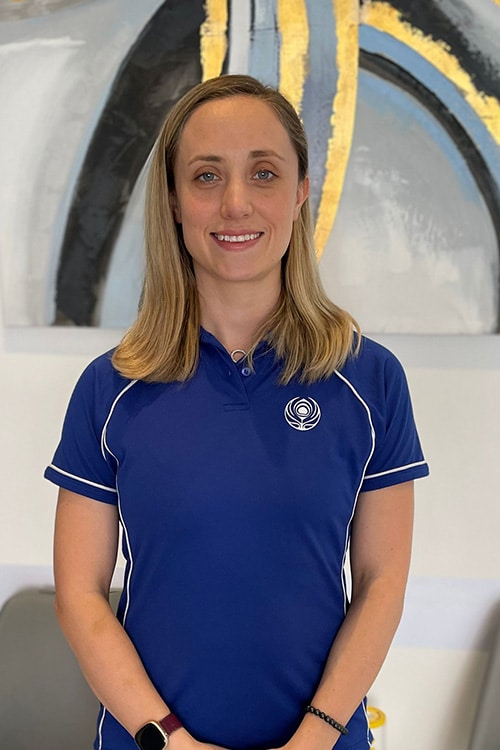Osteopathy
Patients of all ages can benefit from osteopathy, each treatment is tailored entirely to the individual.
What is Osteopathy?
Osteopathy is a form of non-invasive, hands-on manual therapy that focuses on the total health of the body by treating the musculoskeletal framework (bones, muscles, ligaments and connective tissue). This form of treatment can have a positive effect on the natural function of multiple systems in the body, which may be causing a wide range of symptoms.
Osteopaths are trained to recognise structural imperfections and restrictions in mobility, which can sometimes appear to be very insignificant and easily overlooked by other types of practitioners. These structural imperfections can be corrected by simple stretching or by manipulation of the soft tissues. In other cases, they may require mobilising techniques to aid the correction.
Osteopathic manoeuvres are usually gentle and seldom painful depending on the restriction.
The osteopath sees the body as a whole; no single part being independent of the remainder. If you attend an osteopath with neck pain, they will examine your entire structure and may end up manipulating the base of your spine, pelvis or even your feet!
Patients of all ages can benefit from osteopathy, each treatment is tailored entirely to the individual.
“Osteopaths work to restore your body to a state of balance where possible, without the use of drugs or surgery. Osteopaths use touch, physical manipulation, stretching and massage to increase the mobility of joints, to relieve muscle tension, to enhance the blood and nerve supply to tissues, and to help your body’s own healing mechanisms. They may also provide advice on posture and exercise to aid recovery, promote health and prevent symptoms occurring.”
How can osteopathy help you?
Osteopathy can help with, but is not limited to, the treatment of musculoskeletal conditions. Our treatment aims to alleviate pain associated with sudden acute injuries, all the way through to chronic and overuse related conditions.
Below is a list of conditions we commonly see in the practice and you’ll see that it’s not just back pain!
Arthritic pain
Lower back pain (+/- Sciatica)
Upper neck and back pain
Fibromyalgia
Joint pain, including hip and knee pain from osteoarthritis
Frozen shoulder/shoulder and elbow pain/tennis elbow arising from associated musculoskeletal conditions of the back and neck
Muscle spasm
Sports injuries and tensions
Repetitive strain injuries (RSI)
Rheumatic pain
Stiffness associated with ageing
Nerve pain (neuralgia)
Digestive problems
Circulatory problems
Migraine prevention
Inability to relax
Musculoskeletal symptoms associated with chronic conditions eg. osteoarthritis and asthma
Get in touch
If you are uncertain whether osteopathy can help with your particular complaint, just give us a call on 01293 784200 or send us an email for some friendly advice.
What to expect at your first treatment
A full medical history will be taken, and your current condition will be discussed to enable us to understand your presenting problem. We will also ask questions regarding your general health, lifestyle, work and other activities, to help make the correct diagnosis and ensure the osteopathic treatment is appropriate for you.
When all the relevant information has been obtained, we will then carry out a physical examination. You may be asked to get undressed down to your underwear, or if you would feel more comfortable, you are advised to bring shorts/leggings and a top. Your posture will be observed and we will assess how the different parts of your body are working together. Other relevant testing such as reflexes and blood pressure will be done at this point.
After examination, the Osteopath will explain their findings, diagnosis and proposed treatment plan. If for any reason they feel that osteopathic treatment is not appropriate for you, then they will refer you to your GP or another appropriate specialist. Your Osteopath will try and provide an idea of how many treatments may be required and over what period. However, it is not always possible to be precise, particularly if the condition has been present for many years.
The rest of the consultation will involve hands-on treatment tailored to your individual requirements. Treatment generally consists of soft tissue manipulation and stretching of the muscles, ligaments and joints. Dry needling techniques may be used if appropriate, as well as manipulations (HVT’s) to ease any restrictions in the joints.
Following this, exercises and stretches may be recommended to be done at home, or your Osteopath may offer advice on posture, work and seating ergonomics.
Price list
For osteopathy appointments
Initial treatment (Senior Osteopath)
Continuing treatment (Senior Osteopath)
Initial treatment (Associate Osteopath)
Continuing treatment (Associate Osteopath)
45 min Osteopathy Treatment (Associate Osteopath)
60 min Osteopathy Treatment (Associate Osteopath)
Book here
What our patients say
“I am grateful to the osteopaths that helped me with my lower back, it seized whilst I was moving a pot plant and I was terrified I would have to take a lot of time off work. But the osteopaths understanding, reassurance and treatments helped to get me back to me!”
Mr Mitchell, West Sussex
Read the latest on our blog
Find out more about how osteopathy can help you manage and prevent injury and pain.
Symptoms, causes and management of frozen shoulder
Frozen Shoulder refers to a specific condition, not just general shoulder stiffness. The cause is often unknown, but the effect is stiffening of the shoulder capsule: the fibrous tissue that surrounds the joint. It’s an inflammatory condition, known officially as Adhesive Capsulitis.
Sciatica and Osteopathy
One of the most common complaints we see in clinic is Sciatica. Freya Gilmore tells us more about the causes and treatments.
Telehealth in Osteopathy
In these unprecedented times, there comes a need for innovation and lateral thinking to continue to provide our patients with excellent care and service. Telehealth, while reasonably new in Osteopathy, aims to bridge a much-needed gap in health communication. In this blog, we will explore what Telehealth is, discuss what to expect in an online consultation, and answer some common questions.






















